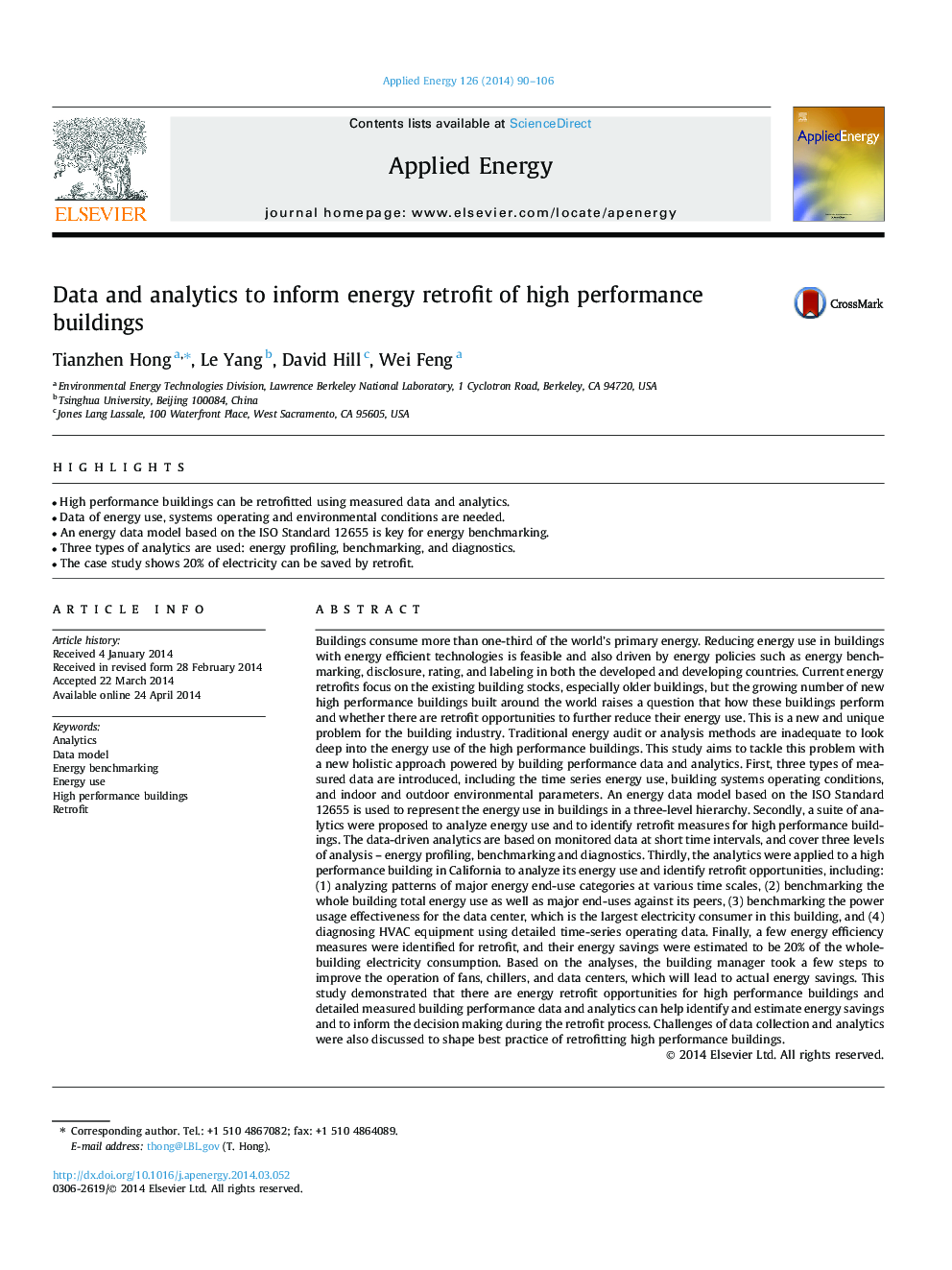| کد مقاله | کد نشریه | سال انتشار | مقاله انگلیسی | نسخه تمام متن |
|---|---|---|---|---|
| 242787 | 501902 | 2014 | 17 صفحه PDF | دانلود رایگان |
• High performance buildings can be retrofitted using measured data and analytics.
• Data of energy use, systems operating and environmental conditions are needed.
• An energy data model based on the ISO Standard 12655 is key for energy benchmarking.
• Three types of analytics are used: energy profiling, benchmarking, and diagnostics.
• The case study shows 20% of electricity can be saved by retrofit.
Buildings consume more than one-third of the world’s primary energy. Reducing energy use in buildings with energy efficient technologies is feasible and also driven by energy policies such as energy benchmarking, disclosure, rating, and labeling in both the developed and developing countries. Current energy retrofits focus on the existing building stocks, especially older buildings, but the growing number of new high performance buildings built around the world raises a question that how these buildings perform and whether there are retrofit opportunities to further reduce their energy use. This is a new and unique problem for the building industry. Traditional energy audit or analysis methods are inadequate to look deep into the energy use of the high performance buildings. This study aims to tackle this problem with a new holistic approach powered by building performance data and analytics. First, three types of measured data are introduced, including the time series energy use, building systems operating conditions, and indoor and outdoor environmental parameters. An energy data model based on the ISO Standard 12655 is used to represent the energy use in buildings in a three-level hierarchy. Secondly, a suite of analytics were proposed to analyze energy use and to identify retrofit measures for high performance buildings. The data-driven analytics are based on monitored data at short time intervals, and cover three levels of analysis – energy profiling, benchmarking and diagnostics. Thirdly, the analytics were applied to a high performance building in California to analyze its energy use and identify retrofit opportunities, including: (1) analyzing patterns of major energy end-use categories at various time scales, (2) benchmarking the whole building total energy use as well as major end-uses against its peers, (3) benchmarking the power usage effectiveness for the data center, which is the largest electricity consumer in this building, and (4) diagnosing HVAC equipment using detailed time-series operating data. Finally, a few energy efficiency measures were identified for retrofit, and their energy savings were estimated to be 20% of the whole-building electricity consumption. Based on the analyses, the building manager took a few steps to improve the operation of fans, chillers, and data centers, which will lead to actual energy savings. This study demonstrated that there are energy retrofit opportunities for high performance buildings and detailed measured building performance data and analytics can help identify and estimate energy savings and to inform the decision making during the retrofit process. Challenges of data collection and analytics were also discussed to shape best practice of retrofitting high performance buildings.
Journal: Applied Energy - Volume 126, 1 August 2014, Pages 90–106
